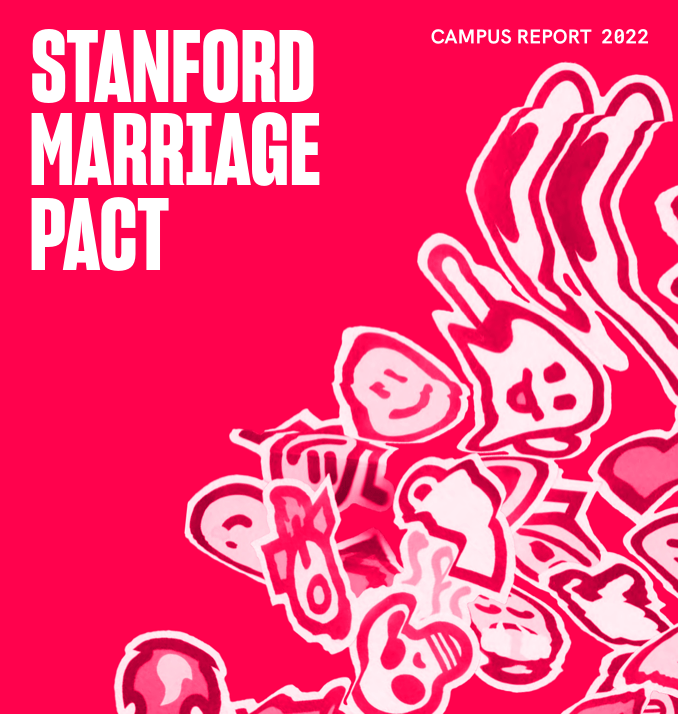Editor’s Note: some of the data in this article has been found to be false. An updated article with more information can be found here.
This March, the Stanford Marriage Pact ranked mathematical and computational science majors as having the greatest likelihood to exhibit Machiavellian tendencies in its latest Campus Report. Those who study engineering physics at Stanford are the most likely to prefer control during sex, and management science and engineering students tend to want more children than others, according to the report.
The findings come from a statistical analysis of anonymized and aggregated data from the 2021 Stanford Marriage Pact survey, which 5,345 students filled out in the fall. It is the first such publication on Stanford students since the previous Campus Report, based on responses in 2020.
Romantic priorities for men and women mostly aligned, though a few differences stood out. Male respondents were more likely to end a friendship over differing political views, and female respondents were more likely to say that flirting is a form of cheating.
(Photo: Stanford Marriage Pact Campus Report)
“The delay of first marriage has really important impacts on a college campus because in 1950 at Stanford, half the students would have been married already — or more,” according to Stanford sociology professor Michael Rosenfeld. “Whereas now, if you look around … less than 1% of the students are married.”
He also said that in some of his larger classes, he’ll ask how many of the students are married. “Nobody raises their hand,” he said. When he asks how many are currently involved with someone who may become a spouse in the future, “a pretty small number of people” raise a hand. “People are not at the settling-down stage,” Rosenfeld said.
Millennials and members of Generation Z today are not engaging in sexual intercourse as often as previous generations, as indicated in the Youth Risk Behavior Survey, and six in 10 young adults worry about becoming too reliant on a significant other, emphasizing independence and self-actualization.
“Ultimately, I think one of the most neglected meaningful relationships of our lives is our relationship with ourselves,” according to Marriage Pact co-founder Liam McGregor ’20.
At the same time, in life there needs to be “a little bit of sensibility and a little bit of love and a little bit of getting swept off your feet,” he said in a November interview with The Daily.
The Campus Report has previously focused on the results reported by men and women. This year’s, however, additionally includes responses from nonbinary students for some but not all questions, in order to ensure the anonymity of said students.
84% of male students at Stanford are heterosexual, 11% are homosexual and 5% are bisexual, according to the report.
76.5% of female students at Stanford are heterosexual, 16.2% are bisexual, 4% are homosexual and 3% are pansexual, according to the report. The remaining 0.3% is not labeled.
The report also provided a breakdown of relationship statuses of students on campus. Singles account for 16.2% of the population, 61.4% are partnered and for the remaining 22.4%, “it’s complicated,” according to the report. It added that conservative, third-year students majoring in comparative literature are the most likely to be single.
As for religious beliefs, agnostics are proportionally the largest group (30.2%), followed by atheists (16%) and Catholics (14%).
The Campus Report stated in its conclusion that the findings are founded in rigorous statistical methodology and data principles. “Any time we make a falsifiable claim through a visual or in words, you can trust that we have tested the claim for statistical significance at α = 0.05, which is standard in the literature,” it read. “This means that it is really unlikely we would get the results we obtained if there were no true differences in the population, which in fact happens with a probability of less than 5%.”
